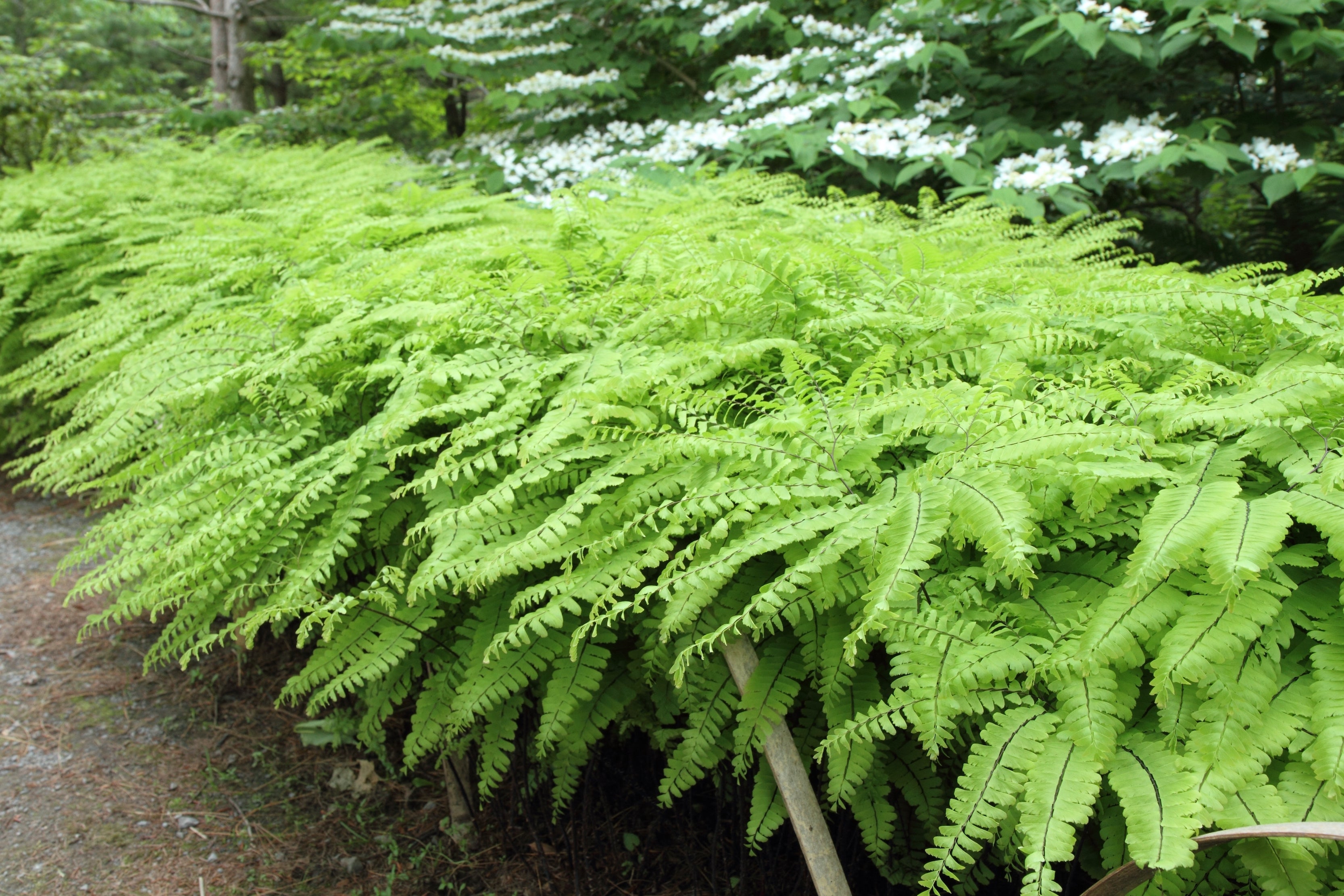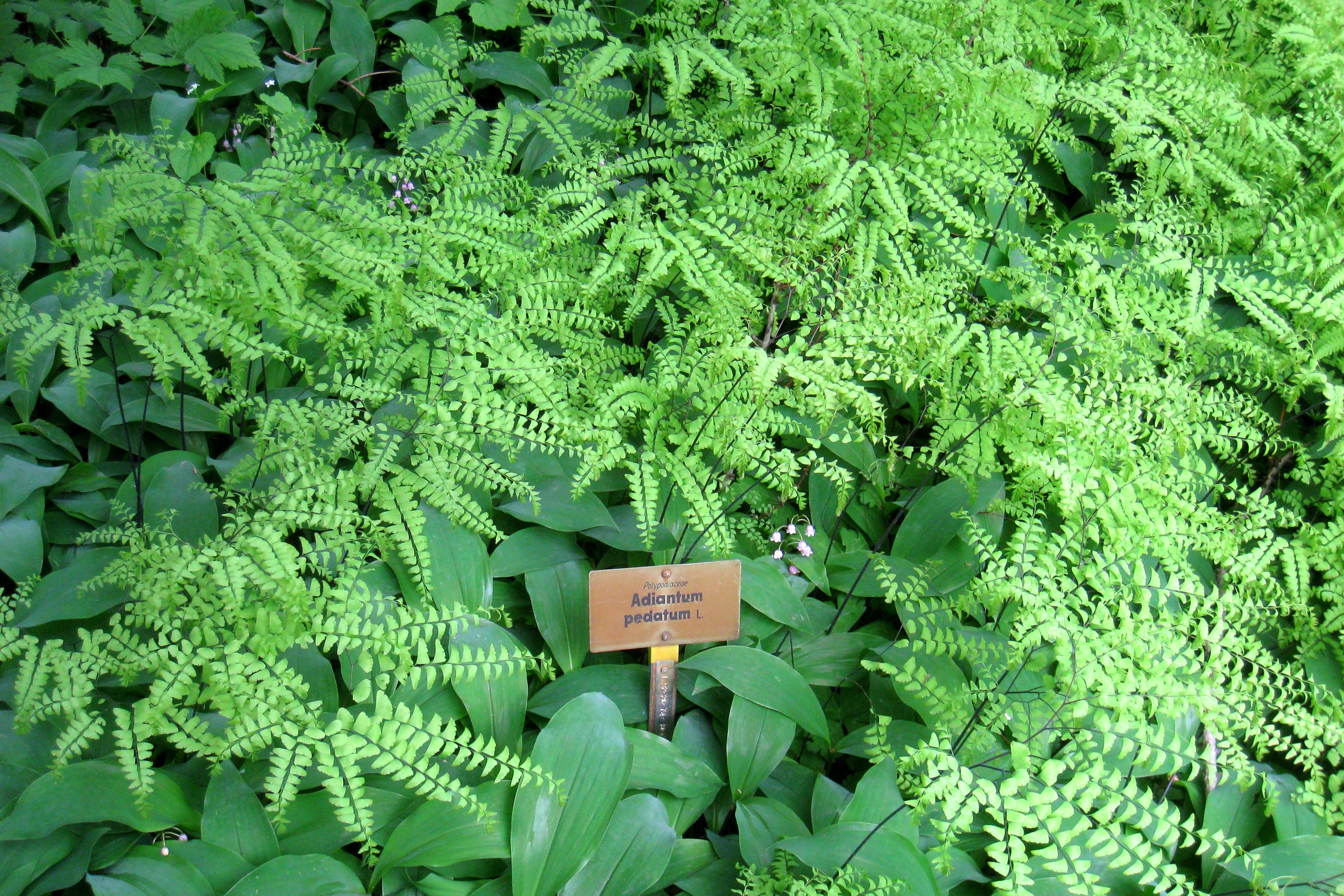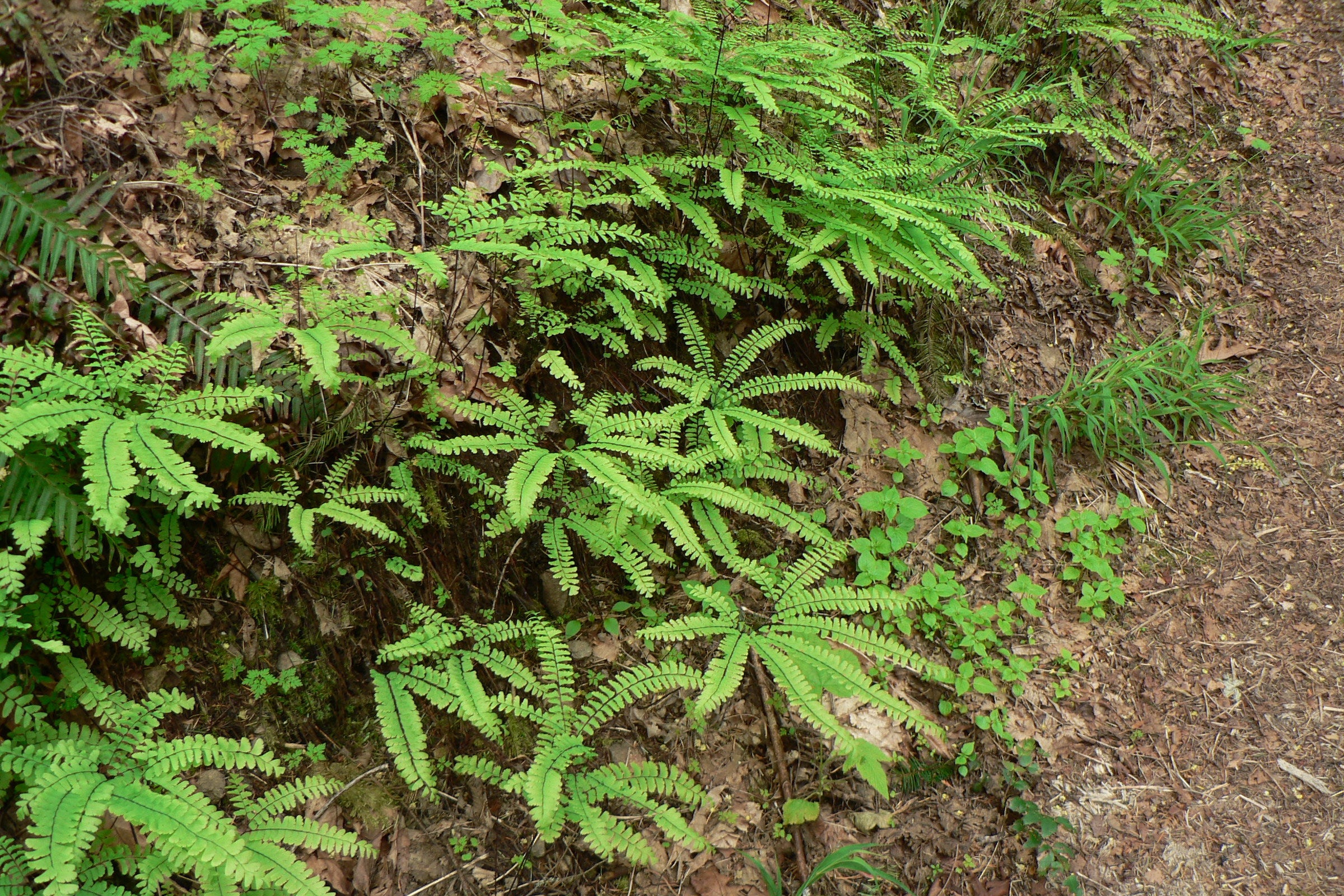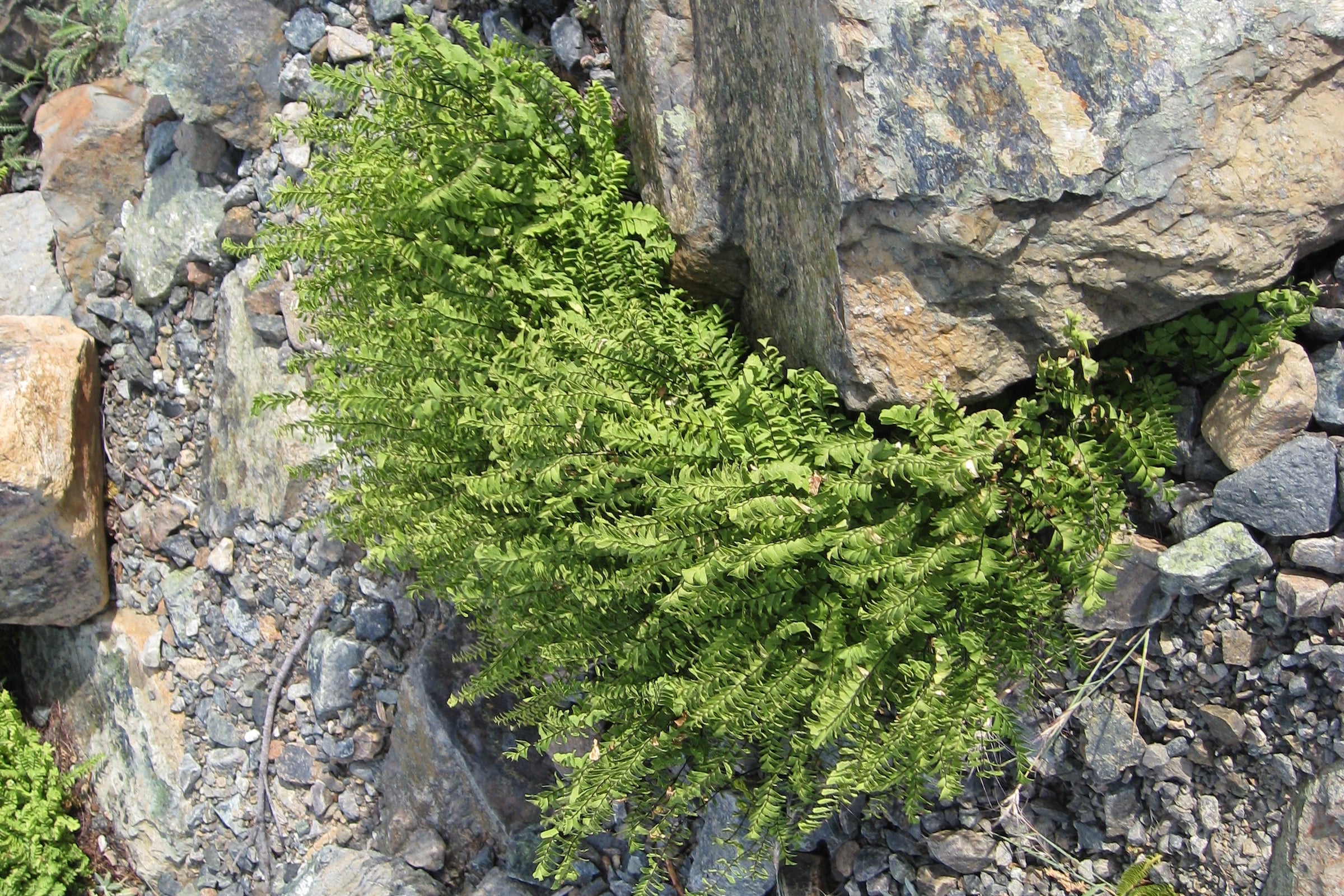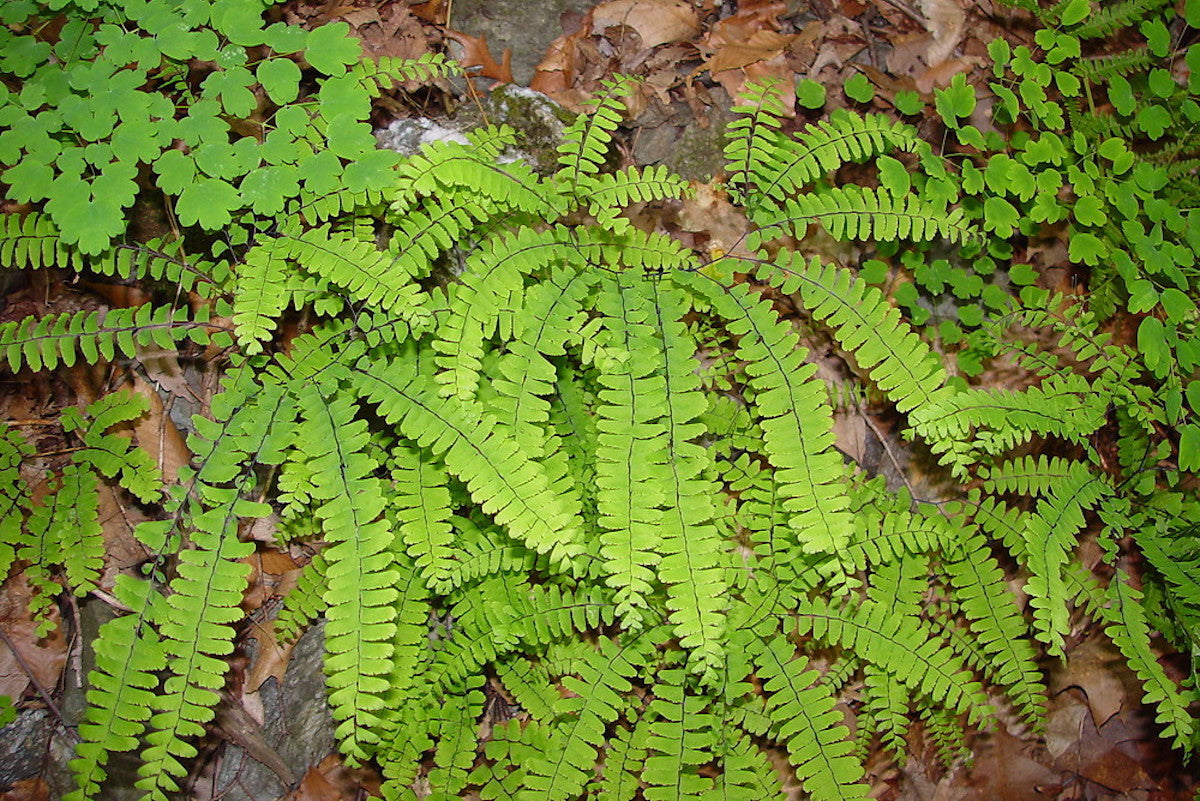Adiantum pedatum L.
Approx. 0.5 litre pot
About this cultivar:
Adiantum pedatum L. is a deciduous fern with a shortly creeping rhizome, forming a classy clump. Wiry black stems bear branched, spreading fronds, sometimes deep pink when young. This a versatile plant - use to naturalise in deep shade, stick in a wall, or grow in a pot on your kitchen table!
Commonly called the northern maidenhair fern or five-fingered fern, it is native to moist forests in eastern North America. The specific epithet pedatum means cut like a bird's foot in reference to the fronds.
It has been of interest for a while - Adiantum pedatum was described by Linnaeus in Species Plantarum in 1753 (the official starting point of modern botanical nomenclature). He referred to earlier descriptions, all based on material from eastern North America. Linnaeus' own herbarium contains one specimen, collected by Pehr Kalm.
- Position: Partial shade, Full shade
- Soil: Almost any soil - grows well in Ballyrobert!
- Flowers: Non-flowering, but interest January, February, March, April, May, June, July, August, September, October, November, December
- Other features: Royal Horticultural Society Award of Garden Merit (RHS AGM), Suitable for Container, Woodland Plant, Interesting Foliage or Fruit
- Hardiness: H6 - Hardy in all of UK and northern Europe (-20 to -15°C), Fully hardy - grows well in Ballyrobert!
- Habit: Clump forming, Bushy
- Foliage: Deciduous
- Height: 30 - 45 cm (1 - 1.5 ft)
- Spread: 30 - 45 cm (1 - 1.5 ft)
- Time to full growth: 2 to 5 years
- Plant type: Herbaceous Perennial, Fern
- Colour: Green
- Goes well with: -
About this genus:
Adiantum is a genus of about 250 species of ferns. The highest species diversity is in the Andes. Fairly high diversity also occurs in eastern Asia, with nearly 40 species in China.The common name is the maidenhair fern, whilst the genus name comes from Greek word adiantos, meaning ‘unwetted’, referring to the fronds' ability to shed water without becoming wet.
They are distinctive in appearance, with dark, often black stipes (stalks) and rachises (shafts), and bright green, often delicately cut leaf tissue. The sori (spore clusters) are borne submarginally (underside of the leaf, at the margins), and are covered by reflexed (curled back) flaps of leaf tissue (a lot of translation going on in this paragraph).
In terms of historic uses, I’ll forgo any anecdotes because we’ll be here all day. You name it, they have probably used Adiantum for it…..... OK,OK,OK! just one! …baldness…it is called maidenhair right? So based on the ‘doctrine of signatures’ - the theory that God placed a ‘mark’ on each plant to alert mortals to its uses- Adiantums mark was an appearance that gave rise to the name maidenhair.
With such a wide range of species it is difficult to generalise, but they generally prefer humus-rich, moist, well-drained sites, ranging from near riverbeds to vertical rock walls. Many species are especially known for growing on rock walls around waterfalls and water seepage areas. They often will tolerate excess water if there is a bit of excess sun. Will also tolerate dry shade. Often grown indoors as well as outdoors.
As the name implies this is one of the most beautiful genus of ferns that tend to look pretty but are also pretty tough.

